Environmentalism, frugality, and minimalism are intertwined. They form a complementary, interconnected system that goes something like this:
Need less, buy less, use less, consume less, spend less, deplete less…. and finally, want less.

Today, I want to discuss how these three values can work in concert to save money, reduce stress, and inform choices.
Much of frugality, environmentalism, and minimalism is encapsulated by doing less. It’s more compelling to buy into expensive “solutions” engineered to deliver a facsimile of these goals, but buying your way to environmentalism (or minimalism or frugality) is nothing more than effective marketing at work.
The cycle of doing less doesn’t get much press because there’s no real profit in it (ask me how I know). The cycle of doing less doesn’t have the advantage of being flashy or even particularly Instagram-able (though I’ve tried). Nevertheless, it’s a compelling way to live.
Frugality, environmentalism, and minimalism are symbiotic. I say this because it’s possible to be, for example, environmentally-conscious and not frugal. Same goes for minimalism: you can be a very un-frugal minimalist, but if you’re frugal, you’ll spend less in service of your minimalist aims. It’s also possible to be frugal but not environmentally-conscious and not minimalist.
Since each value has deficits on its own, it’s the intersection of the three that equals lasting benefit. Here’s how.
The Tactics of Frugal, Minimal Environmentalism
Other than abstention, there’s a slew of tactics you can employ to hit at the principles of frugality, environmentalism, and minimalism. We’ll get to the mindset of this approach in a moment, but let’s explore the action items first:
1) Use What You Have.
Instead of buying The Ideal Consumer Item for every scenario, use what you have around the house. Here’s an example: Kidwoods needed a lunchbox for school this year. Instead of buying her a new lunchbox, I dug out a small, insulated, zippered bag I’d gotten for free from a conference a few years ago. Perfect.

This approach delivers benefits in all three of our target areas:
- Saving money (frugality)
- Avoiding the carbon costs of buying new (environmentalism)
- Reducing the clutter of having an unused bag sitting around (minimalism)
It’s this synchronicity between the three that I strive for. It’s not that buying a lunchbox would’ve been super expensive; rather, it’s the idea that most of us (me included) are conditioned to rely on buying new as our first option. We see that our kid needs a lunchbox for school and our immediate reaction is to hop on Amazon, click around a bit, and have one shipped to our house.
If we start to consider the broader perspectives of environmentalism, minimalism and frugality, we give ourselves the opportunity to meet our needs in a way that’s cheaper and doesn’t impact the planet quite so much. Through the incorporation of the triumvirate, we can re-train our consumer-focused brains and look for solutions that don’t involve amassing more material goods.
2) Buy Used.
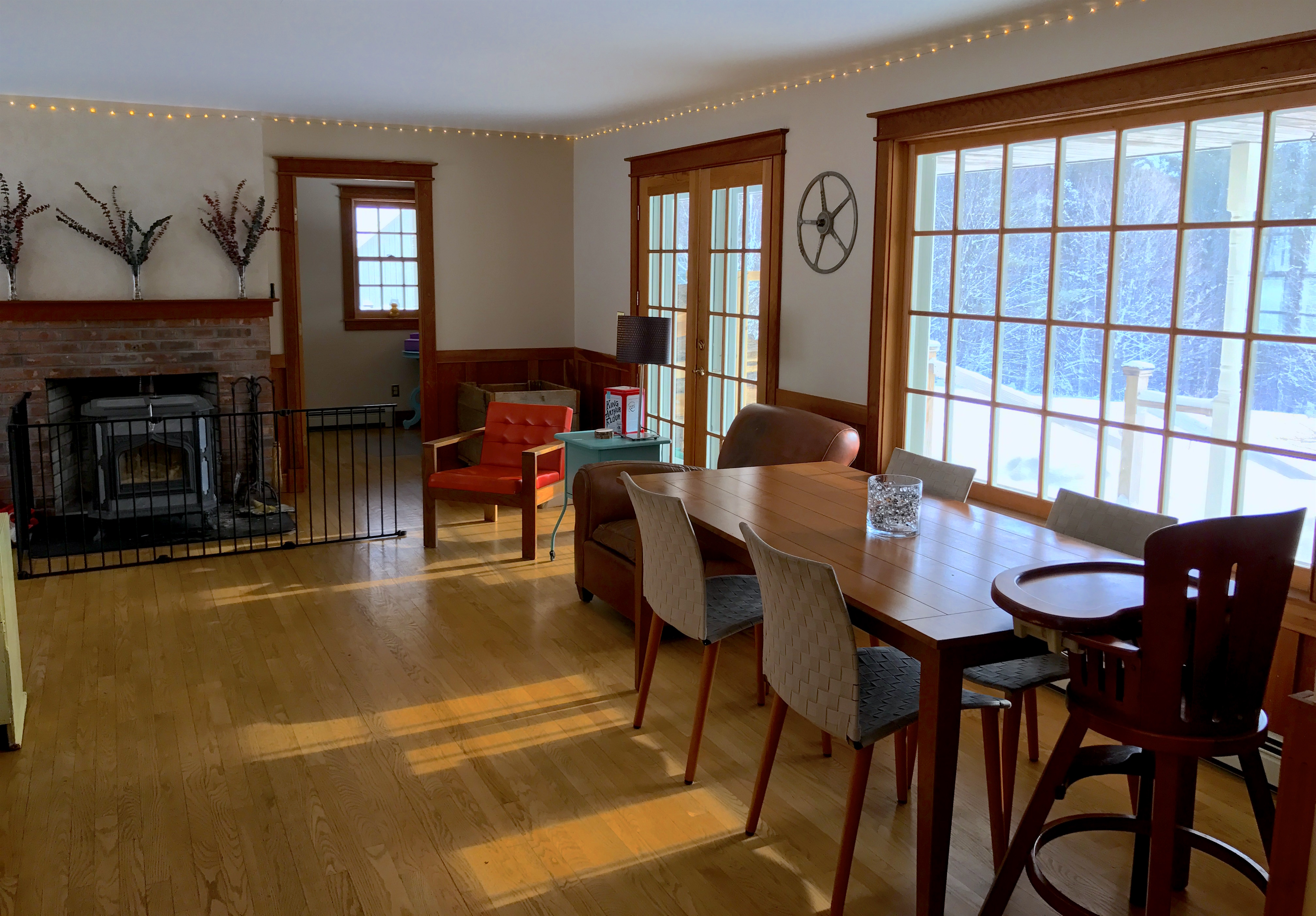
When you do need something? Buy it used. Sourcing your stuff second-hand yields long-term benefits: it’s cheaper, it keeps things out of the landfill, it removes the paralysis by analysis of comparing tons of new products, it teaches you to accept imperfection, and it eliminates the carbon costs of buying new (manufacturing, transit, packaging, etc).
3) Don’t Waste.
Waste creates the opposite effect: it puts stuff into landfills and it necessitates you buy more to replace what you’ve thrown out. This holds true for clothing, food, household goods, everything really.
The goal of reducing waste can be accomplished by incorporating:
- The frugal ethos of not buying more than we need;
- The environmental ethos of not replacing older stuff;
- The minimalist ethos of not desiring more stuff.
4) Keep What You Already Own.
Similar to ‘use what you have,’ the idea here is to keep products for as long as they’re operable and to fix them when they break. I’m not a wholesale Buy It For Life advocate because often, I think Buy It For Life products are too expensive to justify their purported longevity. But, I do like to keep and use our stuff until it’s broken beyond repair.
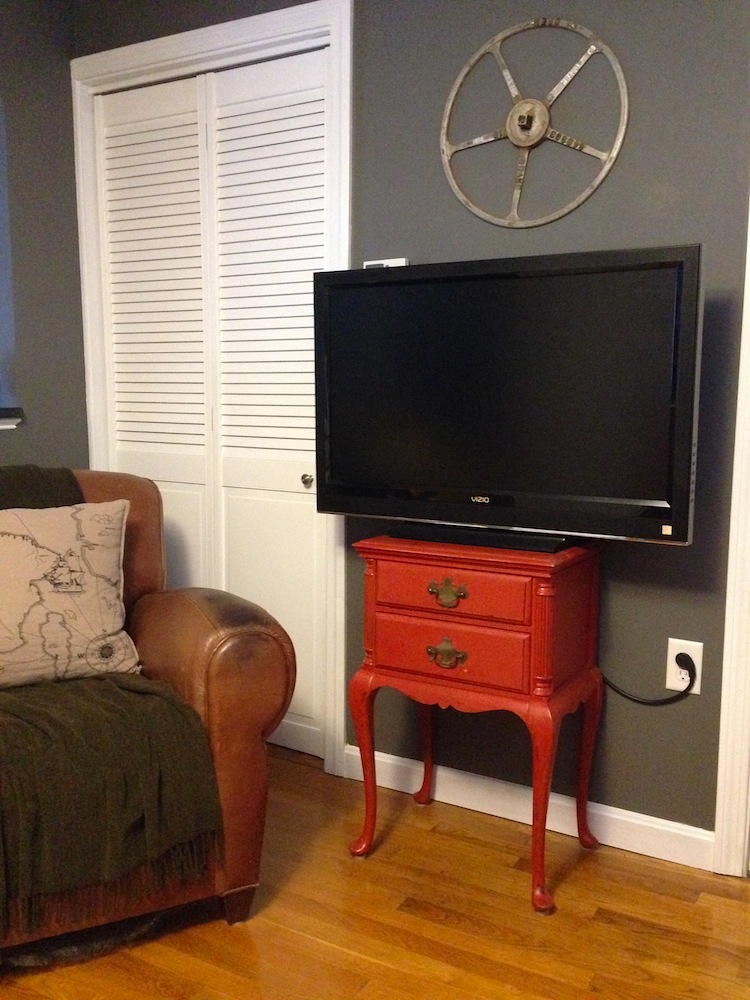
A great example: our television. We bought it for about $600 in 2007 and we use it to this day. It still turns on, it still works; therefore, we see no reason to replace it.
Applying this mindset to everything we own is how we hone in on our triple goal:
- Not buying a new TV saves us money and eliminates the paralysis by analysis of buying new.
- Not buying a new TV engenders a gratitude mindset–instead of lusting after the latest, greatest technology, we’re thankful for the thirteen-year-old television we already own.
- Not buying a new TV avoids the challenge of what to do with the old TV.*
I want to reiterate that each of these examples aren’t–in themselves–going to create a tipping point for money saved or environmental impact averted. However, the overarching idea is that by crafting a lifestyle with these values in mind, we can simplify, streamline and eliminate a great deal of the stress associated with persistent lifestyle inflation, consumption, and comparison.
Additionally, the “it all adds up” trope applies. If I factor in every single item I own (from cars to socks), I’ve saved tens of thousands (if not hundreds of thousands) of dollars over the course of my adult life by buying used, reusing, and keeping old stuff.
*I’m going to disagree with myself. Sometimes, I think it makes more sense to give away an aging item–such as our TV–while it’s still functional and can provide someone with a free, usable item as opposed to waiting until it’s dead as a doornail.
5) Although, Do Consider Energy Efficiency.
I know I just said to keep stuff and use it forever, but I’m compelled to also make the case for energy efficiency. Older appliances can be massive energy hogs and, in some cases, it’ll make more sense in the long run to buy newer, more energy-efficient appliances. Lucky for you, there’s a super easy way to figure out if you’re harboring energy hogs under your roof. Enter: the energy monitor (affiliate link). You plug an energy monitor into an appliance and it gives you a read-out of how much energy it’s consuming. Brilliant! This is how we determined our old fridge/freezer was sucking down electricity like a warthog. We unplugged that hog post haste and bought a brand new, energy efficient chest freezer.
6) Drive Smart.

A small, efficient car is a prime illustration of the intersection of frugality, minimalism, and environmentalism:
- It’s better for the environment
- It’s cheaper because it’s small
- It costs you less in gas
I’m not saying to go out and buy a new car; but, the next time you need a car, consider energy efficient hybrid and electric cars.
It’s also true that if you focus on quality–and buy a well-maintained used car–you can drive that car for a very long time. Our hybrid Toyota Prius (which we purchased used) is ten years old, has 144K miles, is still going strong, and we plan to drive her for as long as she’ll run.
7) Do Without.
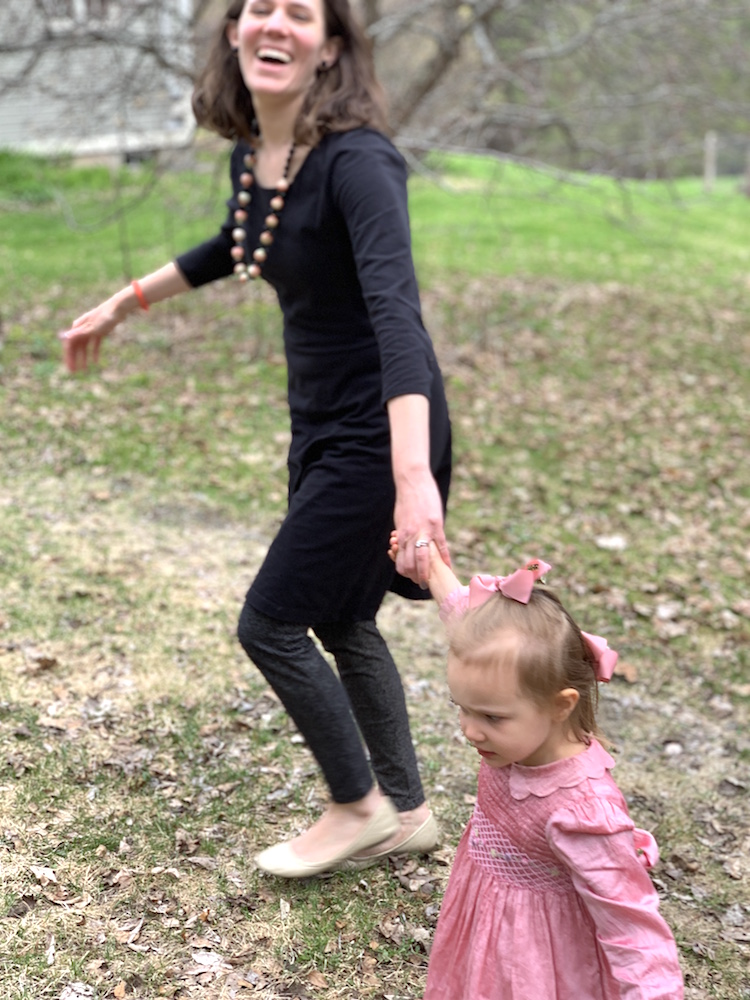
Doing without encourages us to access our creativity and reduce our clutter. For this, minimalism is my guiding principle. After all, it’s easy to get a lot of stuff for very cheap or free (hello garage sales and the side of the road!) in a way that’s environmentally compatible (keeping stuff out of landfills!). But it’s not cheap–from an emotional perspective–to have a ton of stuff in your house.
A cluttered, overcrowded house induces stress–at least, it does for me. One way to eliminate the need to constantly organize, re-organize, and clean is to have less stuff. I’m getting better at this, but I still have a hoarder gene embedded in my psyche. I have an instinctual urge to collect resources JUST IN CASE. My hoarding mentality comes from a place of fear: fear that I won’t have what my family needs, fear that an item might not be available in the future, fear that I might be passing up the deal of the century at a yard sale. I’m slowly reforming this mindset by continually purging our stuff.
Last summer I gave away about 70% of my wardrobe (maybe more?), which gave me incredible relief. I no longer have to store, clean, and fret over these clothes. I wasn’t wearing most of them anyway, so why was I hoarding them? I donated them to friends, to the hospital (for patients to wear home), and to the homeless shelter. Someone can now wear the clothes that were doing nothing but causing me stress.
I still struggle with this one and we still own WAY more stuff than we need. But every year I come closer to recognizing the fear undergirding my hoarding tendencies and I fully acknowledge the stress that owning a lot of stuff brings me.
8) Donate, Don’t Trash.
When you are ready to part with stuff, don’t throw it out. Other people will be happy for your hand-me-downs! Join your local Buy Nothing group, swap baby stuff with friends, drop bags off at the thrift store, or look into recycling programs (such as for broken electronics). Or find a toddler near you–they freaking love broken electronics… says the person with two broken cell phones currently in HEAVY use by two in-house toddler CEOs.
The Mindset of Frugal, Minimal Environmentalism
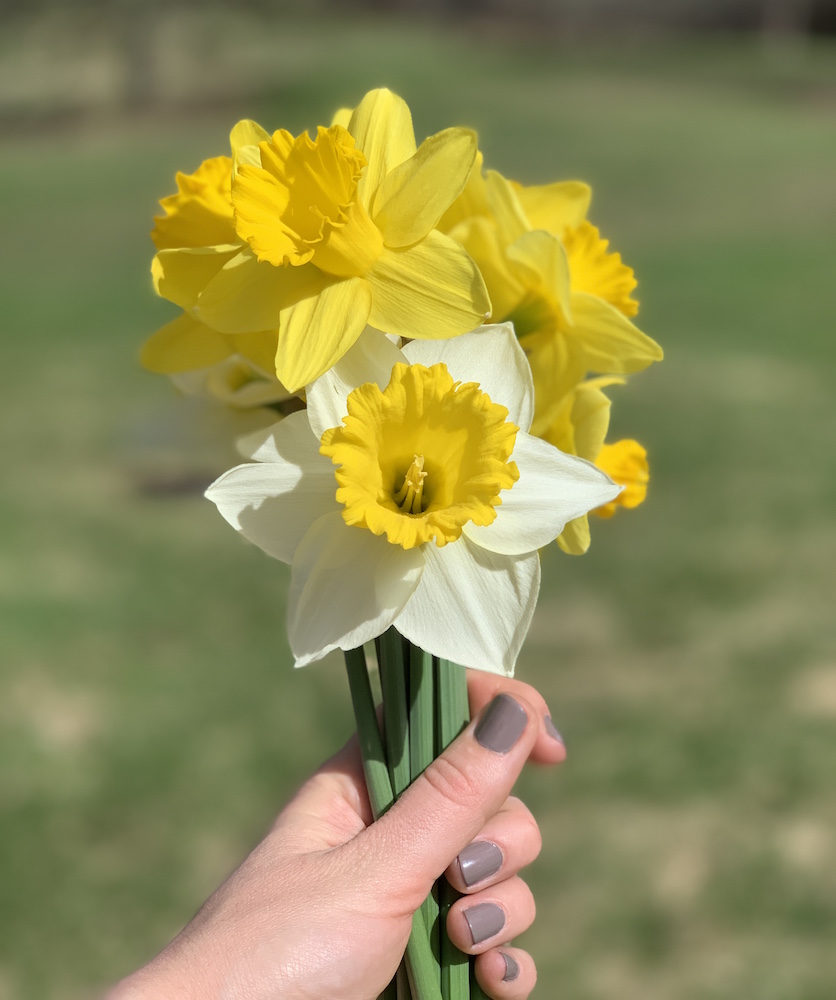
The mindset centers on arriving at a place of enough. Of recognizing and internalizing that we have enough food, clothing, couches, cars. Of being content with what we own and not in a constant mode of greed and grasping.
I think it’s also a question of accepting discordant facts:
Fact: There are newer, nicer, bigger TVs on the market.
Also a fact: The thirteen-year-old TV we own works perfectly fine and serves its purpose in our home.
We’re not disavowing the truth that newer TVs are nicer; we’re acknowledging the fact that newer TVs exist and making the conscious choice to be happy with the old television we already own. There will always be bigger, newer, and nicer. The question is how we manage our expectations around bigger, newer, and nicer things.
This approach takes conscious work every day. Over time, these choices can become habits, which is the key to sustainable and effortless frugal/environmental/minimalist living.
And, full disclosure? I still find myself tripped up by these choices on a daily basis. This morning, Littlewoods threw her water cup onto the floor (as two-year-olds are wont to do) and without thinking, I grabbed paper towels to mop it up. There was a cloth kitchen towel right there, but in the heat of that watery moment, I grabbed the easier, more expensive, less environmentally-friendly option.
Needs Versus Wants
This is the oldest axiom in the financial management book (whatever book that is), but it brings a lot to this discussion. I parse our needs versus our wants by writing down everything we consider buying and figuring out which category it falls under. This ties into my 72-hour waiting period before buying something. I want stuff all the time, you guys! I’m not a Zen master divorced from the material world, lofty in my perfect encapsulation of wanting nothing, needing nothing.

I just spent 25 minutes scrolling through cute summer dresses online WHILE WRITING AN ARTICLE ABOUT NOT BUYING NEW STUFF.
So, please, know that you’re working with an imperfect guide here. My point is that isolating the variables of need and want inform most of my purchases and cause me to not click buy. I didn’t buy any of the dresses I looked at because I gave myself time and space to think it through. I realized that:
- I already have summer dresses I can wear.
- I don’t want to incur the carbon costs of manufacturing, shipping, and delivering a new dress.
- I don’t want to spend money on a dress that I ultimately don’t need and/or could find at a thrift store for a fraction of the price.
- I’m not eager to clutter up my freshly cleared-out closet.
In most of these instances, it’s a question of letting myself take a beat. Of taking a breath, writing down what I want and why I want it, and then waiting. It isn’t always possible to not desire more stuff–I will probably desire new dresses for the rest of my life. And sometimes, I will buy them! Other times, I will step back and pause. I will come to the realization that we can hold discordant truths and make the right choice. We can accept the cognitive dissonance that we WANT a new dress, but that we do not NEED a new dress.
Why Frugality, Minimalism, and Environmentalism Work So Well Together

You can’t buy your way to minimalism, frugality, or environmentalism, but you can–with every decision you make–inch your way closer to a lifestyle that incorporates these three values. What I like about keeping these three values top of mind is that I can fall back on one of the three if I’m not super compelled by another. Their interconnectedness enables me to shuffle them around and make decisions that are well-rounded and thoughtful.
Here’s another example for you: I want a new coffee thermos. The coffee thermos I have (which I am drinking from at this very moment) is about five years old and there are all these totally newer and flashier thermoses (thermii?) on the market, specifically on Amazon where I am embarrassed to admit I am looking at them…. And the kicker? They’re not very expensive.
- For $27.97 I could have a brand new, turquoise (my fave) thermos delivered to me (affiliate link). From a frugality perspective, saving $27.97 isn’t terribly compelling. $27.97 just isn’t all that much money and besides, I’ll use this thermos every day for a long time, right?!?
- Not convinced by the frugality metric, I step back and think about the environmental impact: buying new is going to increase my carbon footprint today, which I don’t want to do.
- Next, I put on my minimalist hat (which is not a real hat because having a real minimalist hat would defeat the purpose of trying to be a minimalist) and I realize that if I bought a new thermos, I’d then have two thermoses to store, clean, and look after when I can only–in all honesty–use one thermos at a time.

It’s this triple threat, and this three-part process, that gets me to close the “Hot New Thermoses” tab and realize I made a wise choice five years ago when I bought a quality coffee thermos that’s still chugging along with aplomb.
I can take the results of this three-pronged test and see that a new thermos doesn’t facilitate my goals in any of the three areas. After deciding not to buy a new thermos, I understand the following:
- The Ideal Consumer Solution exists for everything, but I can get by just fine with something Less Ideal that I already own.
- I have found “good enough.” I accept the imperfection of my old thermos. I know that I don’t have the best, and I am OK with that.
- I am not falling into the trap of thinking “I need to replace this,” when in reality, I WANT to replace it, but I don’t need to.
I am not the most environmentally-conscious person on earth. Nor am I the most frugal. I am obviously not the most minimalistic. Also I’m not the most glamorous.
But none of that matters for today’s discussion. We’re on an imperfect journey together, you and me, and I think the key is an ongoing thirst to learn more and do better.


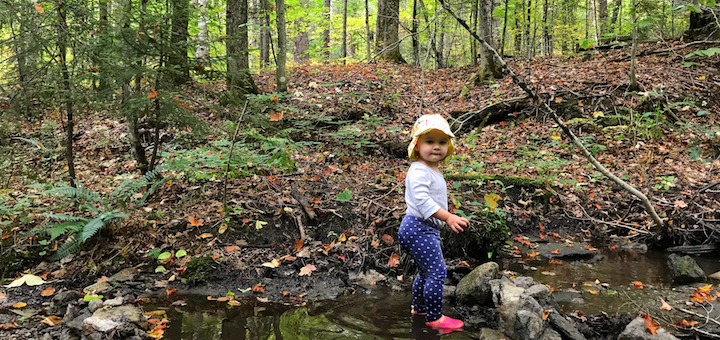
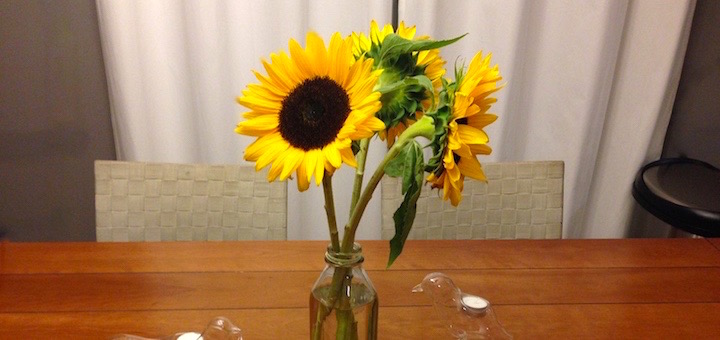
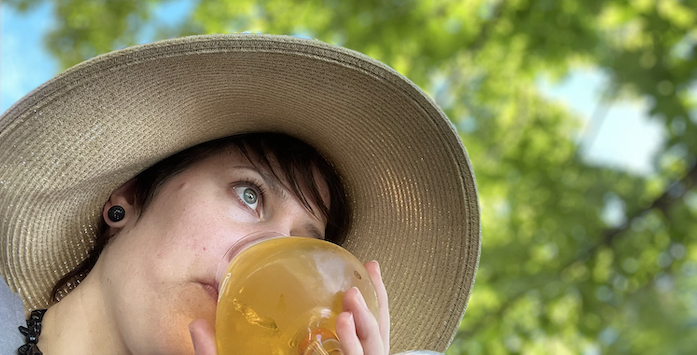

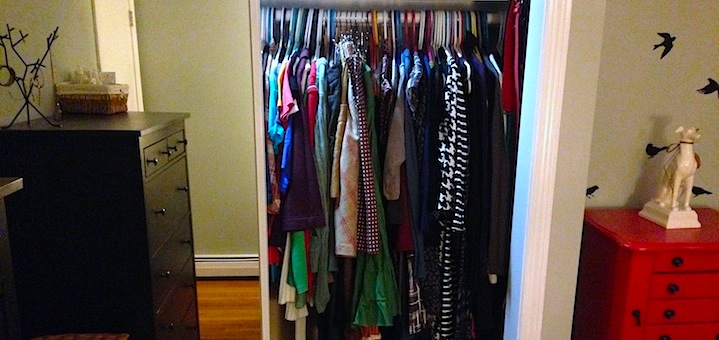

I was smiling when you got to the thermos part. I have a Stanley thermos that’s like 15 years old – the kind that construction workers take to building job sites – and the darn thing still works like a charm. I was ice climbing in the Adirondacks a couple weeks back and my buddy was making fun of it since it looks so old and is banged up. It was 5 degrees out, and my tea was still hot enough to burn my lips, his “nice looking” new thermos wasn’t working quite as well.
Our “perpetual upgrading” culture creates so much needless waste and harm, it’s really sad. Great post
I had never thought to donate clothing to a hospital before! Since I’ve slowly started to become more minimalistic myself, I’ve been fascinated to see how many different places there are that I can donate my stuff to (there’s a post idea for you!). I think you’re spot on when saying that these 3 things go together, and I’ve noticed that as I’ve come to grasp the concept of “enough” in my own life, it also naturally lends itself to a fourth part of the equation—that of being conscious that many others do not have “enough” and that it’s therefore imperative that I spread the wealth around.
But it is fascinating to look back now and see how one of these principles begets the others. I started getting into the minimalism movement in 2013, which led to me wanting to own less, which led me to outline what was really important to begin with, which led me to want to put my money toward my priorities rather than on more things, which eventually led to an increased awareness of how I should do my part to reuse, recycle, repurpose, etc. They really are interconnected! As I’ve become more of one thing, I’ve almost naturally become more of the others.
Hospital worker here! Call your hospital before bringing items to donate; many will only take new items. Also, if you are donating children’s clothing it might have to be both new and labeled non-flammable.
Yes, you should check, but there are lots of places that cheerfully take clothing. Our Ronald McDonald House is always taking donations of all sizes because children and parents are often airlifted here with absolutely nothing but what they are wearing.
Great idea for that “someday” post about where to donate things. Suitcases could be donated to Child Protection Agencies, or Children’s Aid. Many children in the foster care system transport their belongings in plastic trash bags.
Torrie, me neither until last year! I had a car crash (black ice) quite a way from where I live and had my jeans cut off me so they could inspect my leg injury. Fortunately I had been on my way to pick up my husband from the airport (2hrs from home) as we were then going on a road trip for a few days, and I had the ambulance staff bring my suitcase with us. I was so glad I asked about bringing my suitcase, as otherwise I’d have been discharged in my underwear! By the time I was released from hospital all the shops were long since shut, and as I wasn’t in my own town, I couldn’t call a friend to help me out with getting clothes. So fellow frugalists, do donate your gently used clothes to hospitals.
People who’ve had accidents may be far from home or not have someone who can bring them something to wear; there really is a need.
I live in the coldest part of Alaska and we always have a bag with warm pants and an extra jacket and socks in the car in case of a breakdown (like today, when it is 30 below zero at our house). Since we are lazy by nature, we leave it in there year around, instead of taking it out at the end of winter. I never thought about how it might be useful to have extra clothes in the car for situations like yours. Now I will add a long sleeved T-shirt for each of us, so we will have an extra set of clothing if taken to the hospital; it might be too hot in a summer accident but it would keep us from being discharged naked. And I will cram the stuff into a small suitcase for easy retrieval. Thanks for making me realize our stash of clothing may have another use besides keeping us warm in a breakdown. (Plus, I am a six foot tall woman and any spare clothing the hospital might have would probably not fit!)
I’ve recently been working to break my family’s paper towel habit. I used to buy the mega pack from Target. We would reach for them for everything: wiping counters, wiping hands, napkins with dinner, you name it. Obviously neither environmentally friendly nor frugal. Inspired by tips from the January Uber Frugal Month Facebook Group, I placed a small basket of bar cloths on the counter where I usually kept the paper towel roll and a small basket of cloth napkins on the dining room table. I put a single roll of paper towels in the kitchen cabinet under the sink in case of really gross messes (i.e. bacon grease). One month later, that paper towel roll is still wrapped, untouched, in the cabinet.
Great ideas….my son pulls off 5 paper towels rubs a tiny spot then throws them out! 🙁 I like to buy bulk cotton terry face cloths for cleaning. It’s so hard to convince an 18 year old to recycle/reuse etc
I love using a kitchen cloth instead (never thought I would)! So much easier, cheaper, and more environmentally conscious to use them instead of having to buy, throw out, and remember to rebut all those paper towels!
There’s a “lightness” that comes with doing with less that I’ve come to appreciate. I think having less stuff really does translate to a mindset of being able to do with less. While we’re still working our ways towards that (young kids puts a slight damper on that journey), I do feel lighter as we move to get rid of things we don’t need.
I also appreciate avoiding the “perfect consumer ideal good” concept. It was something we did as kids out of necessity but with Amazon’s speed, it’s so easy to order exactly what you want and not consider how much waste is involved. You have the item itself, which we didn’t 100% need, but also the fuel to ship it, the box, the packaging, etc. It’s a reminder that all that has to GO somewhere… thank you for the reminder.
Love the article I am working towards a lot of these things and trying to teach them some of these things. I am still a work in progress. Love the repurposed Christmas bag!
I’ve never been great at thrifting, and I do think that thrifting well is somewhat dependent on where you live because living in a wealthy area ensures you can find nice clothing versus 80s housewife mom jeans at Goodwill. But, I’ve been trying my hand at thrifting on the weekends to find kids clothes, decor, books, etc. and I’ve found some great items! I found a Columbia kids winter jacket that is too big for our daughter now, but she’ll be able to use it one day! I found some decorative plates for our kitchen, books galore, and a few shirts for myself! I’ve enjoyed the experience because we are at at point in our lives where we are establishing a home and do truly need things now that we didn’t before, and finding them without hurting our finances brings me great joy! I just yesterday bought a new vacuum after going 6 months without one and I got it on sale and delaying gratification until I found the one I wanted on sale felt just as good!
Yes, thrifting depends on your area AND what size you are. We live in a rural area, with 3 thrift shops, I needed cereal bowls and ended up at the dollar store which had just what I needed. I would love to buy clothes from a thrift shop, but I’ve sized out of “normal” misses clothes, so I have to buy retail. But not recreationally. Childrens clothes are so easy to find thrifted and at yard sales.
Have you tried ThredUp? I agree that thrifting for clothes can be a challenge; I’m plus size myself and the pickings at most thrift stores are scant. ThredUp has a much bigger selection, not as cheap as true thrifting but still used, more environmentally friendly, and cheaper than new.
I second Allison’s recommendation. I love ThredUp!!! It works best for me when I shop the site for brand/sizes that I already know and love.
I saw a garage sale notice that said something like, “I am a big woman, married to a big man, and we are cleaning out our closets.” A friend who went said the place was absolutely mobbed by both men and women, which speaks I think to the difficulties of buying second hand if you are larger. I thought it was very smart marketing.
Swap.com is also a great place to find plus size clothes. They have a large selection of all sizes of clothing.
I definitely second the thredup recommendation, although, as others have mentioned, it’s not always the cheapest.
Another good source is Instagram. I’ve started following some influencer-types that focus on sustainable fashion for larger bodies. What’s great about it is that they often will mention in the places they are buying used clothes in their stories, or make suggestions of other accounts to follow. Through them, I’ve learned that there are a lot of buy-sell-trade accounts out there, where they are selling nicer, more fashionable, used clothing on more of a peer-to-peer basis.
One of my favorite accounts to follow is called sell trade plus, which seems to have a lot of the slow-fashion, cottage brand stuff that I usually can’t afford. Another account I follow is called fat fancy, which is a plus-size thrift store in the Portland metro area that does weekly Instagram sales.
As a larger person, I struggle with local thrifiting because I chafe at the limited options (and I’m in an urban metro with more choices than most). I’ve found eBay and ThiftUp to be my “happy medium” for the Triumvirate, because I definitely don’t want to end up having thrifted something that doesn’t actually work well for me and therefore doesn’t get used!
Loved this article… just saved me from replacing my stainless drink container…it’s getting old… but still functions. I only use it in the house so who cares if it’s starting to loose it’s outside paint? PS turquoise is my Fav too!
16 – year-old coffee maker, check. 18-year-old toaster oven, check. 12-year-old tv, check. I’m even typing this in a 6-year-old phone! We’re definitely on board with not replacing if it’s still working and if we do need something I look for a secondhand option as iften as possible. When I wanted to switch a few years ago from paper towels to napkins to clean toddler faces I purposely sought out napkins that already existed at a secondhand store for the low cost and environmentally friendly aspect of it.
Is your TV secured to the wall?
I can’t tell from the photo of your TV if it is well-secured to the wall or if it is only sitting on the small table. All of my danger alarms went off wondering if your TV is only sitting on the table. If a child ever bumped into the small table, the heavy TV could easily fall onto the child.
Child-proofing isn’t an issue in our house, but we do have a large dog. Our TV is pushed towards the back of a heavy maple desk which is located in the corner of the room, out of the traffic pattern. If the dog were to go near the desk, the desk is too heavy for him to move or to knock over.
Thanks for the great blog!
The TV picture looked like it might have been in one of their previous homes, so pre-kids?
I also was alarmed by the tv
Fear not! The TV is secured to the wall. Also, that photo is actually from our previous (pre-kid) house. But yes, the TV (in its current location) is safely secured to the wall.
I have found that my minimalism can sometimes get in the way of my frugality. I would have donated that lunchbox as soon as I got it because I don’t like having a bunch of stuff laying around that I’m not using. I’ll definitely search for something I already own, but I’d rather risk having to buy something than keep a room full of stuff I might use in the future. But I guess everyone’s priorities and tolerance for saving stuff is different.
Lauren, I would have also donated the lunchbox. I would figure that if I ever needed one, I would have just bought one from the thrift store. Our thrift stores always have them. I think of the thrift store as my storage!
Yes! I think it was actually this blog a few years ago that referred to Craigslist as “a stream” that you “rent” things from (ie buy when you need, put back when you’re done)
I love this idea.
This made me smile. I would go a step further and never have taken the bag from the conference to begin with. I also can’t stand clutter, and clear the house on a continual basis with our local Buy Nothing group. I’ve gotten into the habit to never accept anything at conferences or races (t-shirt, finishing medals) that I know I won’t use/don’t want to store). But, as you said- then when I do need something I will have to go find it. I try asking on the Buy Nothing group first, then look online. I DO need to try thrift stores!!
Fellow runner Laura! 🙂
I keep a few race tee shirts to wear, and the remainder go into a bin in the attic for a quilt. I’m actually ready to send off my shirts from 2017-2019 to Repat (https://www.projectrepat.com/) for a quilt. I started running in my 30’s and I’m always incredibly moved by the fact that I can make my body move in this way. I keep my bibs and medals around as decor in the house (hubby loves that! haha!), and I keep the shirts for a quilt. Get on Repat’s email list and they will send out sale notifications all the time. Also, they’re local to me (Fall River, MA), and brought life back into one of the Fall River mills. 🙂
Just an idea for you or others have have tons of race tee-shirts that they never wear!
Love this, Ms. FW. Much of this resonates with me. One question: how do you handle plastic/packaging issues? There often is a trade off for me on plastic—and I often find myself debating on what to do. For example, buy a giant Costco plastic jug of vinegar for cheap or refill it at the local health food store for more money? Same thing with things like toothpaste tubes, soap wrapped in plastic, etc.
good question! I struggle with this as well.
I like your comment, and would love to hear more from others…. at our house, we decided to do refill from the local health food store where it’s possible, make products when we can and buy with packaging in mind. At this stage of my eco-journey, the pain of plastic is greater for me than the pain of paying a higher price in money or time. But I am at a comfortable place with my budget, and I think of the extra paid as a donation to the “earth charity.” YMMV.
“a donation to the ‘earth charity'” I love this, Jan! 🤗
Right on! 🙂
I struggle with this too at times, but made the decision to spend a little more when needed to be move closer to zero waste. I have lived a minimalist lifestyle for the last two years and find my savings in not buying things in the first place greatly exceeds the small additional cost of eco-friendly options when I do purchase something. But it’s really a choice of values that is up to each person to make…money or environment (also, environment is money. If/when the landfill in my region fills up we will have a significant tax increase to secure a new site and develop a new landfill).
Exactly. Frugality and minimalism savings helping environmentalism. I am well on my way to zero waste—– it is an incredible feeling!!!! To tread lightly on our earth home. We can do it!!
This is a hard question. I too am very environmentally conscious and do everything I can to reduce plastics packaging (specially ones that are not recyclable, of which there is a lot, chips for example). I use some international stores (health food stores are usually pricey) bulk items like grains, rice, tea etc.
For toothpaste, I first made my own, but quickly realized regular mild soap (like Dove) work just as well. I haven’t bought a toothpaste tube (never recyclable) in 4 years. In fact, I find tooth paste way too sweet and unpalatable now. I quickly adjusted to using soap however.
Some individual boxed soaps usually don’t have plastic wraps, but I too am still looking for the best option on this.
I also use my own grocery bag, and take those produce bags to reuse when I purchase produce. I also mostly purchase fresh produce that are not packaged in plastic. In summer I buy some veggies in bulk when they are on sale and clean and freeze in my own bags that I reuse, rather than purchase frozen veggies. When I buy frozen veggies, I buy the ones in paper boxes than in plastic bags.
Like I said, this is very difficult. I have found some ways to bypass plastic packaging, but it is on-going. Every decision has to be a conscious one—- us consumers having to work against the manufacturers. Only hope is, if enough of us become conscious, maybe the tide will change.
Our town is going to stop recycling pickup (too expensive) soon. We can still drop off recycling at the local university, but I wonder how many of us will do this (I will). So I am now on the lookout for reducing plastics packaging even more. Need a replacement for Aldi oats, for example (lids are plastic).
Quick note here, perhaps too late for many readers to see it… I’ve started using bar shampoo, because of the plastic bottle being single-use. (I’m gradually trying to reduce my use of single-use plastics to start with). It looks like a soap bar (and I do use it in the shower as my basic soap for body as well as shampoo for hair), but it’s clearly marked “shampoo” on the paper band that is its only marketing.
We’ve made the decision to refill at a higher cost but I justify it because we’re saving money in other ways. Being frugal has given us the freedom to spend more where we deem it important. For me, the environmental aspect is more important than being frugal in this example.
I’ve been working to find products packaged in compostable materials (better than recyclable, which is increasingly a non-viable industry and much of the material we send to “recycling” is just being trashed). Kirk’s Castile Soap, for instance, is a cheap and pure bar soap wrapped in paper, and shampoo bars (we like JR Liggetts, which is only about $5-6) are too. It cuts down plastic and also the environmental impact of shipping solid soaps is lower than liquid ones.
Your Q about the vinegar is a tough one, though. Is there a chance you could start making your own vinegar? (I’ve tried several tiems to do so with apple scraps but it’s never worked right for me).
I’m so glad to see that there are other frugal environmentalists out there! So often, frugal discussions about food end up as humble-brags about how low peoples’ grocery bills are. I have been trying to minimize the amount of plastic I buy, although if I have to buy it in plastic, I try to buy it in bulk at Costco because one big plastic container is less packaging than five smaller ones that hold the same amount all together. However, I am not a fan of how they take items like bread that comes in a plastic bag and then they put two loaves together in a third even bigger plastic bag. Or a bag of frozen fruit that contains ten smaller, individually wrapped bags of fruit. These examples are no-brainers for me, but sometimes it is a genuine struggle between my frugal self and my environmentally-conscious self. I think manufacturers should be responsible for their products’ end-of-life disposal, including any packaging. It’s not fair to package things in unrecyclable plastics and then shame consumers when it ends up in the ocean.
On a different note, I wanted to share something that I recently did for the first time. My wife and I went out for dinner (which rarely happens) and I decided to take my own Tupperware for leftovers. I felt like a weirdo as I packaged my leftovers, but then a lady sitting at the next table turned to me and said what a good idea that was and how she would have to remember to bring her own Tupperware next time she went out.
Another thought: whatever container you use (you can ask the restaurant to bring you one when they bring your entrée), put half of your meal in the leftovers container BEFORE you start eating. Half your serving is probably enough anyway, and you have just procured another full meal of leftovers.
Some of our local restaurants offer ‘senior’ plates: just a plateful of the food you ordered, at reduced price (our local Chinese place asks just €5 for a plateful of your choice).
i enjoy your blog because it’s about intertwines these 3 ideas.
One small way I’ve been trying to decrease spending and be more eco friendly is by using microfiber cloths for household cleaning instead of paper towels and sponges, and so far it’s working out great.
How do you handle kids toys in your house? We have amassed so many toys from birthday parties with friends from school and Christmas presents from relatives. I try to periodically go through and remove toys that they’ve outgrown and donate them, but it seems like my 5 year old always finds the toys in the basement or back of my car while waiting to be donated and fishes out half of what I planned to give away (clearly I need to improve my holding place for said toys!). Do you firmly tell friends and family to limit gifts? Thanks!
Emma, when our small house started bursting with gifted toys, we instituted a rule. Any gift giving holiday (Christmas and birthdays at our house) meant no new toy could be played with, starting the day after the event, until the kid(s) room(s) had been thoroughly gone through, by the kid(s), on that day after the event, and a bag of good toys to donate produced, as well as any broken toys. We always checked what they brought us, of course. My husband would then dispose of the hopelessly broken toys and would donate the good toys, right then, with their full knowledge and consent. Believe it or not, our kids got excited about finding great toys they were bored with, or had multiples of, to give to kids who had less. They enjoyed the process, and would crawl under beds and dig in closets to find a missing piece that would make the toy playable again for someone else. Once put to them in a way they could understand, their empathy kicked in, and they really wanted to make someone else happy by getting rid of toys they no longer used. It worked for us for years. You might give that a try.
This is so beautiful. Kids practicing empathy, while getting rid of extras. Love it.
Ahh yes–great question! I should write a post about kids’ toys!! So, from a philosophical perspective, we embrace the Simplicity Parenting ethos that kids play better/are more creative/are less overwhelmed when they have fewer toys accessible to them. With that as our goal, I rotate the kids’ toys every two weeks or so. Since we are very fortunate to have a basement, I have toys stored down there in labeled tubs (there’s a “stuffed animals” tub, a “trucks/cars’ tub, a “blocks” tub, and so on). I select one (or two) items from each tub and swap them out with the current toys. My kids have probably 35 stuffed animals, but they only have two out at any given time. They have at least 15 different cars/trucks, but again, only one or two out at a time (increasingly I’m doing two from each category because they love to play with the same stuff at the same time). In terms of gifts, if family/friends ask, I will direct them to what I think the kids will enjoy. When we receive new toys that we don’t need, I save them in a box and re-gift them for other kids’ birthday parties. I donate toys we no longer need (like all of our tiny baby toys). We still own WAY more toys than we need, but by swapping them out, we never feel overwhelmed by toys–there just aren’t that many out at any given time. I hope this helps!
Same here, my 4-year-old calls it “the magical closet!” I will even put brand new birthday gifts in it. To be handed out at a different time or regifted.
Do you have a homeless shelter in your area? I am buying fewer toys for my daughter these days, as she doesn’t play with them and prefers experiences (zoo, the children’s museum, summer camp, etc.). However, we do have a shelter nearby that houses women and children. I donate her toys there.
I was a bit surprised that your daughter, even as a child, already prefers experiences more than toys. I don’t hear that often. As a child my only favorite toy was a small stuffed toy of a dog, but I don’t know why my mother didn’t think giving me a real puppy with life would bring so much more joy. I think your child is so lucky to have realized minimalism at such a young age, and this is an insight to her (high) intelligence and maturity. Minimalism will spill over into the other areas of her life later on. Congratulations for having such a smart kid!
Always appreciate these kinds of posts–they are such a good reminder for keeping me on the frugal path I want to be on! (One of my biggest weaknesses is eBay shopping… so many deals! Still stuff I don’t *need* that has to be shipped, so restraint is necessary.)
Not sure where this came from, but I love this image of the Buyerarchy of Needs: https://images.app.goo.gl/rNfkZVJm6Vm7FCs68
Good points on using what you have until you get to appliances. Modern Chest freezers, especially if they are not frost free, keep food longer because they do not expose the food to freeze thaw cycles to melt the frost. The food does not thaw, but the sides of the compartment must get above freezing to prevent the frost from accumulating. Chest freezers in their design are inherently more efficient than an up right in the simple physic of opening the door. Cold air falls. So in an upright you loose cold air when the door is open. In a chest freezer the cold air stays in the freezer. Modern motors are much more efficient than old ones. Even some relatively new appliances could have a less efficient motor in them because they were the cheaper at the time model. It is always good to check the motor class for efficiency of washers, dryers, dishwashers, freezers, refrigerators, and anything else with a motor in it.
All correct, and good to expand on the info in the post. If you go back and re-read it, you’ll see that Mrs Frugalwoods considered this in point 5): Although, Do Consider Energy Efficiency.
‘Older appliances can be massive energy hogs and, in some cases, it’ll make more sense in the long run to buy newer, more energy-efficient appliances.’
She also provides a link to test how much E is used by each appliance (with bonus points for the description of their old fridge/freezer ‘sucking down electricity like a warthog. ‘😀) and notes that they bought a new more energy-efficient model.
Slowing down and considering whether to buy, ahead of what to buy, is a great approach.
I often say that I can’t change the world, however, I can do what is possible for me to do in my little corner. Even drops of water can wear down a mountain eventually. Reduce, Reuse, Recycle and just say No Thank You.
I love the timing of this post so much! Just launched ecofrugals this week and there’s definitely minimalism naturally infused in that duo.
Yes, and I started writing a similar post just over a week ago. The fact that we’re all on the same page illustrates how these elements in our lives go hand in hand. 🙂
FW: Which “ism” do you fall back on when a decision requires choosing among the three? I also try to live by all three, but I recently made a decision where my choices did not include an intersection of all three. Each of the best choices required giving up something of the other two. E.g. you choosing to pay for preschool is not the most frugal option, but it meets other values in your life to where you’re willing to compromise on ultimate frugality.
that is an excellent question! Of course life is ”real” and perfect synchronicity isn’t always possible. I’d say a frugal mindset is the starting point, but as with something like pre-school, the question would be ”how can I maximise value”, as in, which pre-school best meets the needs of my child, is most practical (and probably cheaper when it comes to petrol and so on) for the family, but really adds value to the life of the child and gives me time to work / clean the house/ have a nervous breakdown in peace?
Frugality is a great over-arching ethos, but it’s service of a happy, contented life, lived according to one’s values, with a measure of financial security and reduced worries over emergencies. Part of that is considering environment and environmental impact of course, and being mindful about consumption, but we do live in the real world and there will come a day when we’ll have saved enough for that dream trip to Europe and thus WILL get on a plane and do terrible carbon footprint things.
Basically, I’d say you fall back on whichever thing means the most to you / your family according to whatever decision you’re making at the time.
I REALLY enjoyed this article…it’s something that’s been in the back of my mind,esp. being in the uber frugal FB groups etc. I see a lot of environmentally poor but frugal things being suggested there…and I’ve been thinking about the intersection of those two things.
I love that you openly admit to trolling Amazon while writing this…(who doesn’t?? LOL) and I like the 72 hours rules,I guess I do the same, but never gave it a concrete set number before. Example, this week I bought a water filtration system that we sorely need for drinking. It’s simple,and effective,and I kept putting it off b/c it was gonna cost me $$$. Finally I got all the right discounts lined up,went to the website,and…. closed it. I just couldn’t. Came back the next morning….same thing. Finally by late last night,I finally decided….. darn it! I went straight to page and hit “buy”. This decision was the correct one,and it felt good. But I guess I needed that waiting period to really mull it over (after debating it for weeks lol) and now we will have a clean source of water,that’s easier on the environment,and over time will cost us less money than our current setup!
Now to the small stuff…. We use cloth napkins and towels here,but my DH isn’t a fan. He will ferret out my hidden roll of paper towels just to dry his damp hands after a wash,bypassing ALL the clean hand towels hung out along the way! Well…. he finished the last one up the other day and I didn’t buy more. My purpose in buying them in the first place was to clean up animal messes (ew) so of COURSE one of the pets left us a gift last night…. (ew) I had no paper towels, so Instead I made do with a bit of toilet paper (non negotiable purchase in my house) and then some old rags to clean it. I can do this! I was getting upset by the waste going on,and I know it’s “cheap” to buy more paper towels, but environmentally,it’s not.
As for minimalism, that is not my style, I like “curated clutter” as long as everything has a neat and tidy place I’m happy. (and I love collecting vintage)
Thank you Liz for this article. It so resonates with me and puts into words how I feel about being frugal, minimal & environmentally conscious!!
MORE FUN LESS STUFF! I love my older things. I think of their imperfections fondly because they represent a life being lived, of my history. Having things that look new no longer interests me. They look too sterile and disconnected from my ‘dirty’ life. (I’m a farmer)
I have to ask – in the daffodils photo, is that an at-home manicure? If it is, I’m impressed and would appreciate any tips you could share. Manicures are the one beauty-related splurge that I cant DIY successfully and where I live they’re crazy expensive. I recently paid 40 dollars, not including tip, for a regular manicure with clear polish. I can paint my nails just fine but my cuticles never look good.
LOL I noticed the nails too and they look fabulous!
Thank you for noticing my nails!!! Yes, that is indeed an at-home manicure. My tricks: cut nails short, file, use a cuticle trimmer. Then, no base coat. Then, I use the expensive OPI polish (I paint my nails like twice a year, so one bottle lasts forever). I do many thin coats of paint (sometimes as many as 4-5), don’t glop on a lot at a time. I also paint the bottom edges of the nails. Finally, a thin clear top coat to seal it in.
I do think you may have inspired me to do my nails again sometime soon! Of course, after baby has gone to bed for the night as I certainly can’t go that long with my nails drying while he’s up!
My question is what color that is–I am too lazy to ever really do my nails, but when I do I’m always searching for a neutral grey like that one!
If you use a q tip to put hand lotion on your cuticles beforehand, they will be moisturized and any stray polish wipes right off.
I am proud to say that my Verizon LG Flip phone with a key board drives my co-workers, family and friends crazy. It does this to them because they can not believe a person can live without internet attached to them 24/7 or that I can stand not having 15,000 Great Pics with me at all times.
It started out that I kept the phone because I really love it. It turned into a challenge to see how long I can keep. I have also realized I refuse to become one of those people that I am surrounded by who are constantly staring down at a screen and then forcing everyone around me to look as well or worse yet, ignore everything else going on around me because I can not stop staring at the screen.
I have a pinched nerve in my neck which causes almost daily issues and I know that I would succumb to the ways of Those People and cause myself even more pain if I were to upgrade.
I have decided that when this phone actually quits, I will get another flip phone!
Frugal may not be the main reason but keeping this phone for this long falls into all of the categories you listed and it adds humor to my life when someone says to me “google this or that” and I pull out my phone and say, “I can’t seem to get google to work, can you help me”…..
Full disclosure: my husband is One Of Those People” and I do ask him to google for me at times!
Leigh, I hate to be the bearer of bad news, but Verizon literally forced me to get a new phone by cutting off the service to my 14 year old flip phone in December 2019. I was extremely disappointed as I loved that phone and it served the purpose of what I need a phone for, communication with others. I also have an iPad that was given to me and had paid cash for the flip phone originally, so I have no need for more. I was actually so ticked off that I switched to Consumer Cellular, paid cash for a cheap, android phone and immediately got $50 credit when I signed up. Have to say though, I think I will be giving my SO this phone as his is broken, and gets the flip phone they offer for $50. I have yet to pay a bill because of the credit and my new bill is $60 a month less than Verizon. I had been a customer of Verizon for decades, but they were not very interested in meeting my meager needs.
I am certainly no expert, but I think the Verizon thing had to do with their switch to all LTE (4G) service which didn’t exist 14 years ago. The sad, but true fact about all electronics is their “planned obsolescence.” I don’t have a good solution to that except (like you) to use what I have until it absolutely will not work anymore, then replace it with a newer, but previously used, item.
I too was an enthusiastic flip phone user for years. What killed it for us was that the new flips did not have new technology, and became virtually impossible to use efficiently (texting especially) at a time in our family’s history when it was vital that I not miss calls and be able to text. We were told that companies aren’t putting money into flip phone technology since there is so little demand for them. 🙄 I’m really happy for those of you that are still making them work for you!
Please tell me you have the LG V98 (predecessor to the Envy line). I had that phone for about 8yrs! I loved the flip out keyboard.
Leigh,
I have a 14 year old Virgin Mobile flip phone. They just transferred to Boost. I am about to buy a Re-Boost card to see if I can still keep my flip phone. Not sure if the LTE (4G) mentioned below is an issue with Virgin/Boost. Like you and others, I do not want an electronic binky.
Books are my binkys.
To Nancy who said that companies aren’t putting money into flip phones, read “Digital Minimalism” by Cal Newport an associate professor of computer science at Georgetown. He mentions that some people he knows who are tired of being always available have 2 phones – 1 binky for work and 1 flip for personal. That way when they really don’t want to be contacted, but want to be available for a true emergency they take the flip and leave the binky.
Electronic binky 😂😂😂
Loved this post 🙌
I’ve thought about this intersection a lot so I loved this post. Good for my wallet is so often good for the planet! Figuring out how to reuse things and repurpose things is also so much more creative than just buying a solution.
1 comment on Buy It for Life – I recently went through my closet and discovered I have at least 10 pieces that are in heavy rotation (3 times per month) that I’ve owned for 10+ years. None of them were cheap. But the price per wear at this point is infinitesimal. It’s important to be careful that we don’t acquire junk that needs to be cycled through faster. That’s terrible for the environment. Just my two cents.
I feel that way about jewelry. I don’t wear much if any costume jewelry, but I wear the same diamond earrings and pearls day in and day out. My watch is 20 years old, and I wear it all day every day (except for running, when I wear a digital watch). So yes, the earrings or necklace may not be cheap, BUT…. I dress for my work, and I wear them daily. And while my jewelry is nice, and I appreciate it, none of it requires much in the way of insurance (just a single rider on our renters policy in case of loss or theft), and none of it needs to live in a vault- its all for wearing and enjoying! 🙂
My engagement ring is actually the diamond from one of my grandmother’s diamond earrings. I have a plan to give my step-daughter my first pearl necklace (purchased by that same grandmother) for her 16th birthday. Good jewelry, if cared for, and in a classic style, will literally last a lifetime (and beyond!).
I think its all about balance, knowing what you like, and keeping things classic and simple. 🙂
My mother picked up a wooden picture frame in someone’s trash pile and ultimately brought termites into her house. I encourage anyone that picks up an old wooden piece of furniture to always check it over. Leave it somewhere out of your house and look under it for a week or more to see if any sawdust like material shows up. A sure sign there is a termite or other wood boring species in the wood. I too have picked up pieces. Usually not wooden ones though. Just FYI.
Ditto for bed bugs. I’m a social worker and we’re constantly helping our clients deal with bed bugs. Be very cautious about anything soft coming into your home. Wash and dry any clothing/ soft stuff you buy immediately. Look carefully at hard furnishings- they can also house bugs. Just be thoughtful about where you take things from and make sure to treat them so that you don’t bring in bugs.
Your posts nearly always resonate with me. I’m smiling about Amazon. I love the “add to my list” feature. It allows me to still look and daydream a bit, without actually purchasing. Then if the want becomes a need at some point, I have it on my list already! Or I can point one of my kids or my husband to it for gifting purposes. But mostly it allows me to give in to the need to daydream sometimes, without actually purchasing. 🙂
I can really relate to the hoarding gene, especially hoarding items that I’ve assigned sentimental value to! I’ve been working on that over the last decade by taking the opportunity moving affords to go through all my belongings and purge out what no longer serves. I’ve had a few “D’oh!” moments of over-zealous purging that lead to later regret, but that’s served to remind me that I need to take time when getting rid of stuff to sort out my feelings. Now I try to go through all stored items and the stuff in my daily space once or twice a year. I create piles of definitely ready to donate or sell, I may want to donate or sell, and definitely NOT ready to donate or sell, then I wait. I go and visit the piles over a few months, items shift around the piles during various visits. When I feel like “yes, ready now,” the definitely pile goes! I’m doing this now with all the accumulated ephemera from my mom’s home. It’s a process that I’m finding gets easier the more I heal over time. I think back on cross country moves I’ve done where I hauled SO. MUCH. STUFF back and forth and think why???? Life is a lesson, if nothing else!
After we moved from Pennsylvania to Oregon 9 years ago, we had a pile of stuff in the basement labeled “Why the hell did we move this all the way across the country?”
Energy monitors are great–in many places you can also BORROW ONE FROM YOUR LIBRARY, local school or maybe even energy company. A win for frugality, minimalism and the environment!
I love this article and laughed out loud about browsing for dresses while writing about not buying stuff. Right there with you.
I’ve lived in my lovely senior apartment for two years and I’m on my second roll of paper towels. My secret is to keep them in the bathroom cabinet where they’re more trouble to get to when I can just grab a towel instead.
No paper napkins, either. I bought a dozen cloth napkins at World Market for $20 several years ago & they’re still going strong with daily use. Six red & six goldy-chartreuse, they complement my collection of colorful yard sale & thrift store china.
Setting a beautiful table every day with cloth napkins and my boho china is my idea of frugal, green luxury.
Nice job! I finally defeated my paper towel habit by stashing more rags where I actually need them – the kitchen and the bathroom. Now I’m not tempted for the quick fix, because the rags are just as quick to access!
Rock those colorful napkins – they sound fun.
Well damn. Now I want a new thermos! 😂
And may I just say, that Zojirushi thermos is A-MAAAZING. I had been using a dollar store knock off that was much less than satisfactory–the Z will keep your beverage hot even overnight!
Interesting–I think my Zojirushi was a total waste of money. It keeps drinks warm, but not actually hot-hot (maybe I like my coffee hotter than most people), and the pouring spout is awful. I’m glad you like yours, Linda. But JP, I think personally that you can save your money.
I shop on amazon occasionally and add things to my ‘lists.’ It’s almost as satisfying as actually buying, sad to say. Days or weeks later I’ll look at my ‘lists’ and think, why on earth did i want that.
Love this article! I just read Joshua Becker’s book “The More of Less” and have purged over a hundred books I’ve been moving around for 20 years (Plato’s Republic?? Really, am I going to re-read that?), in addition to 50% of my clothes, so many duplicate or unused kitchen gadgets, shoes, etc. I feel free and can see my time opening up. What I am finding is that I don’t want to be ruled by desire. We all have them, but they are only amplified, not lessened, when we accumulate more and more and more. The cure for desire is not more, it is less. Thanks Liz for the post.
I love that you make a point to say that you are not the most frugal, minimal or environmentally-conscious person, because neither am I BUT there is so much value in doing what we can to be better. I find that having little kids makes all of these things choices harder (right now I’m staring at a pile of never played with toys that my kids were gifted this Christmas) but it is so important to show them the way.
I practice patience and do without for a sometimes inordinate amount of time to align my lifestyle with my frugality. I have a desire to have a beautiful-to-me home, but I’m unwilling to fork out the cash for most new items. I have an area to the right of my front door that is begging to become a reading nook. I read a ton and it’d be a cozy space to curl up with a good book. I have an idea of what I want the space to feel like. I’ve seen the exact chairs I’d ideally put there and could order online and have my new furniture here in a few days. But alas, the space has sat vacant for the 6 months we’ve owned this home. 🙂 I scored a free chaise I originally thought would be perfect, but said chaise didn’t end up working well and even if it had, it would have gone as I couldn’t get the smoke and dog scents out no matter what I tried. But now I know I want two comfortable chairs and a small table for the area. I’m holding out for the right used furniture to come along. Most of what’s offered for free or cheap doesn’t fit my style. They’re big, plump chairs of leather, *interesting* floral patterns, wingback chairs, etc. I’m a big MCM lover, but also want comfort. I’m confident the right chairs will come along and so I practice patience as the score of free (or nearly free) chairs trumps my desire to fill the space. You’d laugh at the space currently. It has a massive marble coffee table with plants on it basking in the sun. The table is too large for anywhere in our home and we need to sell it, but it’s working for the moment. There is also a dishwasher and a stove flanking the table. The dishwasher was free and will be sold this week after hubby fixed the issue. The stove is for our use once hubby runs a gas line from the basement so we can get rid of our electric stove. It wasn’t free, but it’s brand new and was $2500 if purchased from a store. It was a scratch-and-dent that someone had as an extra after their replacement arrived and we got it for $500! You won’t even notice the small dent on the side as it fits between our cabinets.
My favorite sentence: “I just spent 25 minutes scrolling through cute summer dresses online WHILE WRITING AN ARTICLE ABOUT NOT BUYING NEW STUFF.”🤣
You might also be able to check out energy monitoring kits from your local public library to save a few more bucks. I was surprised to find that was an option at my library!
Love your site! I have one tiny suggestion (and if you’ve already considered this, forgive me). Have you thought about setting your links to open in a new tab? Whenever I click a link to a different post or an affiliate site, it navigates me away from the current page I’m reading. It would be great to have links open in a new tab so I don’t lose my place in the current post. Just a thought! 🙂
If you right click on a tab, you can select “open in new tab.”
I have a question for those who use cloth napkins (especially with messy eaters in your house). How often do you wash them? Is it after each meal or when they are visibly dirty? Since it’s flu season I would hesitate to leave them out for repeated uses in case I grab someone else’s. I also know what my son’s paper napkin looks like after each dinner and wonder if it’s worth the water usage to wash them regularly.
I’ve amassed a collection of cloth napkins through gifts, thrifting, etc. When a napkin needs to be washed I drop it in a basket set aside for napkins and cloth kitchen towels. I also wash bags used to transport food (either grocery or meals) with these items. When I have enough for a small load, I go ahead and wash them.
Some of my friends who have families buy napkins in color sets and assign a color to each family member: red is mom, blue is dad, green is sister, yellow is brother and so on. That way you can eliminate some of the worries about reusing someone else’s napkin.
If I were sick or suspected a guest was sick, I’d put them in the basket for washing after a single use. If the napkins aren’t completely destroyed, I keep using for a while.
Full disclosure: I am single and live alone, so I don’t generally have to deal with the remains of children’s napkins. I also hang on to the napkins that show up in carry-out food orders (can’t believe I’m confessing to that on FW!) – when I get home I put the napkins and flatware in a bin for future use.
I wash mine when they get visibly dirty or get greasy. I usually wash them with a load of towels, and I have a drawer full of more to use while the dirty ones wait for the next load. I spray the stains with a mix of hydrogen peroxide and dish detergent, then lay them aside (I use a re-purposed old bucket) for wash time. I bought most of mine at yard sales, but some have been given to me by family that knows I use them. I have wooden ladder back chairs, and each person’s napkin is folded on the back of the chair after the meal, so they don’t get mixed up. Another option is napkin rings that are not all alike, each person having his or her own ring. That was the rings’ actual purpose — to distinguish the family napkins so they didn’t get mixed up at the next meal. Clean napkins were always used when there were guests, so there was no need to have rings for company.
We have a laundry basket in the kitchen. Towels and napkins go in after usually one use. In general we’re fairly messy eaters. Especially with cold and flu season, wash and dry those.
We wash when when visibly dirty, which can range from every meal to a couple of times a week. We got a 6 napkin set for each kid from Etsy, though, so the patterns are very distinct and there is no way to accidentally take someone else’s. Hubs and I use more neutral patterned ones. We’ve had them several years and they are still going strong. About water usage – napkins are tiny compared to the rest of the laundry so I can’t see that they add more than pennies to the laundry load (unless you’re washing them separately, but why would someone do that?).
We are a family of three, so washing our napkins each day takes up virtually zero space in the washing machine (we’ll use them for the day, leave them at our places, and throw them in with the next load). I can’t imagine that even with a family much larger than ours the water usage would even remotely match the impact that paper napkins have. I did cloth diapers in large part because even with the extra water/energy for washing them on their own, the environmental and cost impact of disposables is SO MUCH worse. Napkins, in comparison, can be washed with other laundry and don’t need a separate wash load.
And also, there is no need to buy premade cloth napkins–they can be home-made out of remnants of fabric, which costs literal pennies and takes no skill in sewing. You just need to hem the edges, even roughly or by hand if you don’t have a machine, so that they don’t fray. We have a huge stack that my mom made for us this way, so having a few sets in the laundry does not set us back at all.
I am currently reading “Secondhand; Travels in the new Global Garage Sale” by Adam Minter, so your post is very timely for me, as it seems to go along with the same theme!
The book is about what happens to the items that do NOT sell at Goodwill……it’s quite eye-opening, and really makes you think about your own carbon footprint, and what a “disposable” world we have become.
I’m already pretty minimal, buy secondhand, reuse, recycle…etc…..now I wonder if I’m doing enough!
“Good enough” is the thing, right there. Is it “good enough?” Also, don’t let the perfect be the enemy of the good enough. Some tidbits from my own life:
1. Our oven is broken. Now, we paid someone $100 to come and diagnose the two problems. (This is a 16 year old gas range/oven.) First, the thermocouple probably needs to be replaced – it doesn’t always heat the oven to the right temperature. That’s an electronic part, we can probably replace it relatively easily. Second, the large burner won’t turn and light. It’s stuck (which happens), and basically needs a new connection to the gas line and whole new burner setup. That is beyond our abilities. We were quoted $324 to fix the stove (we paid $399 for the thing, new, in 2004), and $650 if we get the one year warranty. New stoves are $399-500 (electric) and $450-550 (gas) for a similar size and type, meaning run of the mill, low end stoves that aren’t going to break. No bells and whistles. So what did we do?
Nothing. We are still using the broken stove. What will we do? I dunno. Either fix the oven and continue to deal with only 3 burners (it’s been 6 months, what’s another 6?) or get a new stove.
2. My house. Has 2BR, 1BA, 4 people, one dog, no garage. I’d love another bathroom, but eh. And a few of my coworkers really think I should add on and “go up” and it will increase the value of my house for when I sell!
– No it won’t. Firstly, the guy suggesting it is in his 70s, California real estate isn’t like it was 40 years ago.
– “Going up” on a 70+ year old house will cost $400k to $500k. The resulting house (maybe 1800 sf instead of 1100 sf) would still have no garage and be on a 4000 sf lot – so sorry, it’s NOT going to be worth > $1.4M.
– I have many more things to use that money for, like 2 college educations.
3. Frugality vs environmentalism. Whenever possible, I buy my grains, nuts, seeds, etc in bulk, using my own containers. This is better for the environment than buying in plastic, which is not recycled – even though it is more frugal to buy it in plastic. Same with produce, I buy produce from two local delivery services that source from local farms. Buying pre-packaged produce is way cheaper, but it’s better for the environment to buy it in reusable boxes. But, don’t let the perfect be the enemy of the good enough! There are just some things I can’t get without plastic, and I don’t sweat it.
This is true, isn’t it? I don’t think I’d really thought about it before as an intersection of values.
I definitely like to buy things that last a long time, but lasting “forever” isn’t a criteria of mine. Just a good long time will do. However, on that note, my husband’s parents died when he was young, and we ended up with his mother’s expensive stainless cookware. I use those pans every day, and except for replacing the handles (found them online!), they’ve needed nothing else. They are from 1962. She had kept the receipt, so we know. So some things I have, maybe really are lifetime items….
Since I’m older now, I find a strong urge to declutter, and my husband and I have let go of things that surprised us. We have a long way to go, but I am determined not to have a house with packed closets and utility room. I want to spend less money and time acquiring and dealing with stuff; I don’t want to stay in a larger home just because it has storage space. Minimalism.
I gave up using paper napkins many years ago, and paper towels a few years ago. I re-wear my clothes more before washing them, and we try to combine all our trips to save gas and wear and tear on the car. I am on a mission to not waste food. So, environmentally better.
And all of these things save us money. So, frugality. It does go together! I like your honesty, though. I troll around for new things, then wonder why I feel this urge to buy them when I don’t need them. Glad I’m not alone!
I do the re-wear of work clothes before washing them (using soap berries) and either hanging them on the clothes line or in the shower if they are darks. I’m showering every other day. That saves water. I use cloth napkins and re-wash plastic bags. Really think before buying things. Have given a kitchen set and a dining room table to two different families who had to set up housekeeping after fleeing abusive relationships. Gave one glasses and mugs as I didn’t need a dozen of these things.
I appreciated your comment about browsing for summer dresses while writing about being frugal! 😊 It’s just very *real*!
On that: I try to examine what other influences are happening in my life that would put me in a place of “I want to buy something”. Sometimes, it’s more emotional context than anything else. Perhaps, in the depth of winter, daydreaming about summer dresses is just an emotional outlet for the fact that you desire some warm weather! The goal would be to acknowledge the emotional context and just sit with it; keep daydreaming about summer but don’t press the “Buy Now” button. Buying summer clothes won’t bring summer any quicker!
I discovered this after losing my husband over 15 years ago; then my son last year and then my mother-in-law (new husband) just last month. Every time I had a major loss, I would find myself perusing stores more often; dreaming of the perfect life without any of the pain I was experiencing. I like your 72-hour rule just for times like this. Buying something won’t ease the pain so I’d rather go home and have a good cry with a cup of coffee/tea. There are things that help us process emotions, like daydreaming; and there are things that delay it, like shopping too much. While no one would ever balance that perfectly, it’s at least something to strive for. Awareness.
Thanks for all your posts!
Your writing is always amazing, but this is a philosophical masterpiece. I’m going to send a link to this to every person I know who doesn’t understand why I live my life the way I do. You are so right that the overlap of these three philosophies creates an incredible sweet spot for a happy, satisfying, low-stress life. And like you said, if one doesn’t convince you in a certain situation, another one will. It makes for a nice set of checks and balances.
Elaina – I am so sorry about all of your losses.
I find myself looking on line this month because of the winter thing. But I did not buy! Frugal victory.
Right this minute I am in a purchase purgatory, waiting for something to be delivered and wondering if I really just gave in to a “want” not “need.” It’s a small food dehydrator. I’ve looked for used for years and haven’t found one. It’s well-rated among those intended for “casual” use. I do a small garden every year and like to buy veggies when cheap and in season to freeze. But after trying to wedge one more thing into the freezer of my 17cuft “normal” size fridge, I started thinking that dehydration might be the way to go ( I’m eyeing you, massive containers of onion and bell pepper.). Fingers crossed that it is not another want-gone-wrong!
I don’t have a dehydrator, but I noticed that one of the libraries in my city has at least one to check out! might be a way to try out dehyrating.
I bought a dehydrator and have never regretted it. The food takes up a lot less space and no freezer burn if it takes me two years to use up dried leeks. I have a huge garden and work mine nearly to death every fall. I have also given gifts of dehydrated vegetables, to people I know make a lot of soup.
I don’t believe you’ve mentioned it, but do/did you and Mr. Frugalwoods use cloth diapers? (No judgment if you didn’t! Just curious.)
Loved this! The balance of the three values is what we are striving for in our home. We’ve always been frugal, but we’ve more recently become minimalist, and we are working toward being more green. It’s a process made up of one decision at a time.
“Thermii” – absolute gem! 🤣🤣🤣
I have that Zojirushi thermos you linked in the post. I am on year 4 with it and I cannot say enough great things about it. There much be some type of Japanese wizardry nano technology that literally makes it the perfect thermos. It is light as a feather, slim enough to fit in the mini cup holders in my economy Ford Fiesta car, and has the perfect mouth piece where you get the perfect sip each time. The coffee stays the same temperature all day long. I should probably post this as a review on Amazon! If your 72 hour wait is over I would add it to your cart and maybe pass your old one onto a friend.
I’m so glad you put paragraphs to this sentiment. It can be hard living to embrace all three values and not acknowledge being a bit “peculiar,” to others. However, it’s still important to represent and know that it just may free the person who sees these quirks to allow more choices in their own life to go in the same direction.
“I just spent 25 minutes scrolling through cute summer dresses online WHILE WRITING AN ARTICLE ABOUT NOT BUYING NEW STUFF.” – made my day! 🙂 It’s indeed very helpful to think about all 3 factors with every “need” vs “want” moment. Thank you!!!
Before I read anyone else’s comments, I just want to say that this is a post to bookmark so I can come back to it again and again and again. Thank you for sharing it! I appreciate the acknowledgement that in today’s consumerist society, “enough” has to be a consciously-made choice. I also appreciate your full disclosure of struggling with wanting to get the bright and shiny, because it shows this is all a work-in-progress and even the experts still work it every day instead of sitting back on their laurels. And your pictures are gorgeous. 🙂 Wishing you & your family & all your blog readers an excellent day.
Well, I hadn’t thought of wanting a(nother) new shiny thermos, but after looking at the ones you’re considering, now I WANT ONE = )
Loved this article so much. There is so much great overlap between these principles. The hardest part for me is making sure to pause and allow myself to think through other options. My daughter and I actually just did a frugal use-what-you-have. She wanted to blow bubbles, but we didn’t have any. A quick google search revealed that 1cup water + 1/4 c dish soap makes perfect (and cheap) bubble solution! Frugal score!!
Something new I’m trying this year is a monthly Amazon day. Basically I can only order from Amazon once a month (we live in a rural area and some of the things we get from them are necessary), but it’s really helped us to winnow through our cart and only purchase what we truly need and want.
That’s a great idea!
We go through regular “purges” at home. It started with getting rid of seasonal kids clothes as they outgrew them, but has extended to every room in the house. On a quiet Sunday morning we will pick a room or two and identify things that need to go. It’s a very therapeutic experience!
I don’t have a thermos but I got a yeti mug for Christmas. I always wanted one but couldn’t justify the cost. But now that I have one it gets used every day (for hot and cold beverages) and is literally one of my favorite possessions. Knowing what I know now I’m still not sure if I would have bought one, however it brings me happiness every day which I think is another attribute to intersect with those of this article.
Thank you for summing this up so eloquently! I started decluttering and dabbling with zero-waste living before I found FIRE. When I realized how the three intertwined so beautifully it blew my mind!!
Love your post. Best yet, for me. You are right. They really work together. I sometimes miss that view in blogs centered around one of them. Your article is great!!
This is all so true! Little things can make such a difference. I haven’t bought aluminum foil in my entire adult life because I always clean and reuse any foil that I get with leftovers and take out. It’s a small thing, but doing a bunch of little things like that adds up!
Living on a homestead has certain realities compared to your previous urban life such as increased driving, more cars, and lots of specialized equipment that is idle the majority of the time. How has your decision to live on a homestead impacted your ability to achieve the three principles? I know that living where you could hike in the woods was the driving goal, but looking back, would you do the same thing (buying a homestead) again, or do you have any other ideas on how to efficiently have access to outdoors while pursuing the three principles outlined?
It dawned on me one day that nearly everything we own in our home-furniture wise and lots of kitchen stuff- has been thrifted or given to us. I guess for us, we’re not into flashy new shiny things anyway, so it works. My focus these days is getting rid of the clutter!